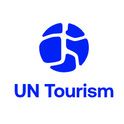International Tourism Down 70% as Travel Restrictions Impact All Regions
Restrictions on travel introduced in response to the COVID-19 pandemic continue to hit global tourism hard, with the latest data from the World Tourism Organization (UNWTO) showing a 70% fall in international arrivals for the first eight months of 2020.
According to the newest UNWTO World Tourism Barometer, international arrivals plunged 81% in July and 79% in August, traditionally the two busiest months of the year and the peak of the Northern Hemisphere summer season. The drop until August represents 700 million fewer arrivals compared to the same period in 2019 and translates into a loss of US$ 730 billion in export revenues from international tourism. This is more than eight times the loss experienced on the back of the 2009 global economic and financial crisis.
"This unprecedented decline is having dramatic social and economic consequences, and puts millions of jobs and businesses at risk," warned UNWTO Secretary-General Zurab Pololikashvili. "This underlines the urgent need to safely restart tourism, in a timely and coordinated manner".
This unprecedented decline is having dramatic social and economic consequences, and puts millions of jobs and businesses at risk
Recovery short-lived
All world regions recorded large declines in arrivals in the first eight months of the year. Asia and the Pacific, the first region to suffer from the impact of COVID-19, saw a 79% decrease in arrivals, followed by Africa and the Middle East (both - 69%), Europe (-68%) and the Americas (-65%).
Following its gradual reopening of international borders, Europe recorded comparatively smaller declines in July and August (-72% and -69%, respectively). The recovery was short-lived however, as travel restrictions and advisories were reintroduced amid an increase in contagions. On the other side of the spectrum, Asia and the Pacific recorded the largest declines with -96% in both months, reflecting the closure of borders in China and other major destinations in the region.
Demand for travel remains largely subdued due to the ongoing uncertainty about the pandemic and low confidence. Based on the latest trends, UNWTO expects an overall drop close to 70% for the whole of 2020.
Rebound in international demand expected by Q3 2021
UNWTO's Panel of Experts foresees a rebound in international tourism in 2021, mostly in the third quarter of 2021. However, around 20% of experts suggest the rebound could occur only in 2022. Travel restrictions are seen as the main barrier standing in the way of the recovery of international tourism, along with slow virus containment and low consumer confidence. The lack of coordinated response among countries to ensure harmonized protocols and coordinated restrictions, as well as the deteriorating economic environment were also identified by experts as important obstacles for recovery.
RELEVANT LINKS
- Download the press release in PDF
- International Tourism and COVID-19
- UNWTO Tourism Recovery Tracker
- Covid-19: Putting people first
- Report: Travel Restrictions 7th
About UN Tourism
The World Tourism Organization (UN Tourism) is the United Nations agency responsible for the promotion of responsible, sustainable and universally accessible tourism.
As the leading international organization in the field of tourism, UN Tourism promotes tourism as a driver of economic growth, inclusive development and environmental sustainability and offers leadership and support to the sector in advancing knowledge and tourism policies worldwide.
Our Priorities
Mainstreaming tourism in the global agenda: Advocating the value of tourism as a driver of socio-economic growth and development, its inclusion as a priority in national and international policies and the need to create a level playing field for the sector to develop and prosper.
Promoting sustainable tourism development: Supporting sustainable tourism policies and practices: policies which make optimal use of environmental resources, respect the socio-cultural authenticity of host communities and provide socio-economic benefits for all.
Fostering knowledge, education and capacity building: Supporting countries to assess and address their needs in education and training, as well as providing networks for knowledge creation and exchange.
Improving tourism competitiveness: Improving UN Tourism Members' competitiveness through knowledge creation and exchange, human resources development and the promotion of excellence in areas such as policy planning, statistics and market trends, sustainable tourism development, marketing and promotion, product development and risk and crisis management.
Advancing tourism's contribution to poverty reduction and development: Maximizing the contribution of tourism to poverty reduction and achieving the SDGs by making tourism work as a tool for development and promoting the inclusion of tourism in the development agenda.
Building partnerships: Engaging with the private sector, regional and local tourism organizations, academia and research institutions, civil society and the UN system to build a more sustainable, responsible and competitive tourism sector.
Our Structure
Members: An intergovernmental organization, UN Tourism has 160 Member States, 6 Associate Members, 2 Observers and over 500 Affiliate Members.
Organs: The General Assembly is the supreme organ of the Organization. The Executive Council take all measures, in consultation with the Secretary-General, for the implementation of the decisions and recommendations of the General Assembly and reports to the Assembly.
Secretariat: UN Tourism headquarters are based in Madrid, Spain. The Secretariat is led by the Secretary-General and organized into departments covering issues such as sustainability, education, tourism trends and marketing, sustainable development, statistics and the Tourism Satellite Account (TSA), destination management, ethics and risk and crisis management. The Technical Cooperation and Silk Road Department carries out development projects in over 100 countries worldwide, while the Regional Departments for Africa, the Americas, Asia and the Pacific, Europe and the Middle East serve as the link between UN Tourism and its 160 Member States. The Affiliate Members Department represents UN Tourism's 500 plus Affiliate members.
